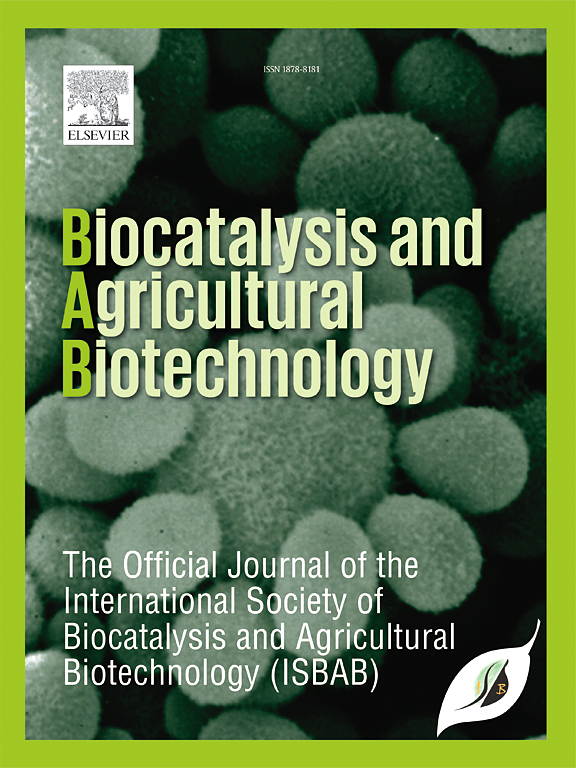Investigations of thermal effects during pyrolysis of agro-forestry biomass and physicochemical characterizations of biofuel products
IF 3.4
Q2 BIOTECHNOLOGY & APPLIED MICROBIOLOGY
引用次数: 0
Abstract
The development of biofuels from waste residues is critical due to higher emissions of greenhouse gases from petroleum and coal and rising energy demand. Converting agricultural and forestry biomass into biofuel products efficiently is a practical approach for simultaneously addressing renewable energy security and waste management challenges. This study examines the physicochemical characteristics of several agro-forestry residues such as camelina meal, mustard meal, flax straw, hemp straw and spruce wood to assess their suitability as feedstocks for pyrolysis to generate biochar, bio-oil and gases. An analysis was conducted to evaluate the influence of temperature (300–525 °C), heating rate (5–35 °C/min) and reaction time (30–75 min) to assess their impact on conversion efficiency and product distribution during pyrolysis. The optimal temperature, heating rate and reaction time for pyrolysis of camelina meal as a model biomass were determined to be 450 °C, 5 °C/min and 30 min, respectively. Physicochemical characteristics of biochar and bio-oil were analyzed to determine the impact of controlled thermal breakdown through slow pyrolysis. As the temperature increased, the calorific value, carbon content and thermal stability of biochar increased due to the removal of volatile matter and the development of aromatic carbon and phenolic features.
调查农林生物质热解过程中的热效应以及生物燃料产品的物理化学特征
由于石油和煤炭的温室气体排放量增加以及能源需求不断增长,利用废渣开发生物燃料至关重要。将农业和林业生物质有效转化为生物燃料产品是同时应对可再生能源安全和废物管理挑战的实用方法。本研究考察了荠菜粕、芥菜粕、亚麻秸秆、大麻秸秆和云杉木材等几种农林残留物的理化特性,以评估它们是否适合作为热解生成生物炭、生物油和气体的原料。分析评估了温度(300-525 °C)、加热速率(5-35 °C/分钟)和反应时间(30-75 分钟)对热解过程中转化效率和产品分布的影响。以荠菜粕为模型生物质进行热解的最佳温度、加热速率和反应时间分别确定为 450 ℃、5 ℃/min 和 30 分钟。分析了生物炭和生物油的理化特性,以确定通过缓慢热解控制热分解的影响。随着温度的升高,生物炭的热值、含碳量和热稳定性都有所提高,这是由于挥发性物质的去除以及芳香碳和酚类特征的形成。
本文章由计算机程序翻译,如有差异,请以英文原文为准。
求助全文
约1分钟内获得全文
求助全文
来源期刊

Biocatalysis and agricultural biotechnology
Agricultural and Biological Sciences-Agronomy and Crop Science
CiteScore
7.70
自引率
2.50%
发文量
308
审稿时长
48 days
期刊介绍:
Biocatalysis and Agricultural Biotechnology is the official journal of the International Society of Biocatalysis and Agricultural Biotechnology (ISBAB). The journal publishes high quality articles especially in the science and technology of biocatalysis, bioprocesses, agricultural biotechnology, biomedical biotechnology, and, if appropriate, from other related areas of biotechnology. The journal will publish peer-reviewed basic and applied research papers, authoritative reviews, and feature articles. The scope of the journal encompasses the research, industrial, and commercial aspects of biotechnology, including the areas of: biocatalysis; bioprocesses; food and agriculture; genetic engineering; molecular biology; healthcare and pharmaceuticals; biofuels; genomics; nanotechnology; environment and biodiversity; and bioremediation.
 求助内容:
求助内容: 应助结果提醒方式:
应助结果提醒方式:


